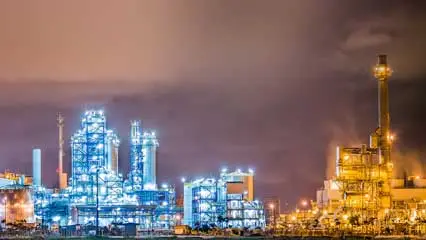Global Fuel Grade Petcoke Market is projected to be worth 25.3 billion by 2034 and is anticipated to surge at a CAGR of 5.87%.
A carbon-rich solid byproduct of the oil refining process, fuel grade petcoke, also known as petroleum coke, is created when heavy crude oil dregs are delayed in coking. Its high calorific value and low cost in comparison to more conventional fuels like coal make it a popular choice for industrial applications as an affordable fuel source. Petcoke of fuel grade is usually dark in color and comes in pellets or hard lumps. Despite its efficient combustion, it frequently contains significant levels of heavy metals and sulfur, which can be harmful to the environment. Cement kilns, power plants, and other heavy industries that require large amounts of thermal energy often use it.
Drivers:
One major factor propelling the fuel-grade petcoke market is the increase in energy consumption worldwide, which is a result of urbanization and industrialization. Petcoke is positioned as a competitive alternative to conventional fuels as nations continue to expand and the need for economical and efficient energy sources rises. More often than not, fuel-grade petcoke is less expensive than other fossil fuels like coal and natural gas. It is a desirable choice for businesses trying to reduce operating expenses without sacrificing energy output because of its affordable price and high calorific value. Governments and regulatory agencies are pushing greener fuel alternatives more and more in an effort to cut greenhouse gas emissions and fight pollution.
Challenges:
Despite its benefits, petcoke's negative effects on the environment, such as its high carbon emissions when consumed, are a major deterrent. Growing regulatory demands and public awareness of air quality and climate change may impede industry expansion. Changes in the price of crude oil and the oil market as a whole have an impact on the petcoke market. Due to supply and pricing uncertainty brought on by this volatility, end users and possible investors may be discouraged from signing long-term agreements. Fuel-grade petcoke is facing competition from the growing use of renewable energy sources like wind and solar. Over time, petcoke may see a decline in demand as businesses look into more environmentally friendly choices.
Market Trends:
The market for fuel-grade petcoke is impacted by the growing concern for stringent rules and the increased emphasis on environmental sustainability. There is pressure on enterprises that burn fuel-grade petcoke to upgrade their technologies for more environmentally friendly operations that produce less pollution as a result of the global pollution and carbon emissions crisis. In addition to better combustion methods that try to minimize emissions, this has led to a greater order preference for petcoke with lower levels of metal and sulfur. The market for fuel-grade petcoke is anticipated to be impacted in the upcoming years by regulatory changes, the uptake of new technologies, and general economic shifts.
Global Fuel Grade Petcoke Market Key Players:
Aminco Resources, Bharat Petroleum, BP, Cenovus, Chevron, Cocan Graphite, Exxon Mobil, Indian Oil, Marathon Petroleum, and Oxbow are just a few of the major market players that are thoroughly examined in this market study along with revenue analysis, market segments, and competitive landscape data.
Global Fuel Grade Petcoke Market Segmentation:
By Physical Form: Based on the PhysicaL Form, Global Fuel Grade Petcoke Market is segmented as; Sponge Coke, Purge Coke, Shot Coke, Needle Coke.
By Application: Based on the Application, Global Fuel Grade Petcoke Market is segmented as; Power Plants, Cement Industry, Steel Industry, Aluminum Industry, Others.
By Region: This research also includes data for North America, Latin America, Asia-Pacific, Europe, Middle East & Africa.
This study also encompasses various drivers and restraining factors of this market for the forecast period. Various growth opportunities are also discussed in the report.





































